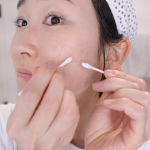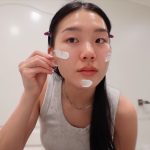Hair breakage is a common issue that affects many individuals, leading to fragile, brittle strands that are prone to snapping. Understanding the underlying causes and taking proactive steps can significantly reduce the risk of breakage. By incorporating gentle hair care practices, proper nutrition, and targeted treatments, you can maintain strong and healthy hair. This article will explore effective strategies for preventing and treating hair breakage, providing you with the knowledge to care for your locks and avoid unnecessary damage.
Whether your hair is curly, straight, thick, or fine, breakage can occur for various reasons, from heat styling to chemical treatments. Recognizing the signs of hair breakage early on allows you to address the issue before it worsens. In this guide, we will discuss what causes hair breakage, the potential consequences, and actionable tips to prevent and treat it. By understanding the problem, you can take control of your hair’s health and maintain its natural strength and shine.
Understanding Hair Breakage, Causes and Effects
Hair breakage often stems from a combination of internal and external factors. Internally, nutritional deficiencies and stress can weaken hair strands, making them more susceptible to damage. Externally, excessive use of heat tools, chemical treatments, and rough handling contribute to the problem. The effects of hair breakage include thinning hair, split ends, and an overall lackluster appearance, which can be frustrating and affect your self-esteem.
Addressing the root causes of hair breakage is essential for effective treatment. By identifying the specific triggers in your routine, such as over-styling or inadequate hair care, you can make necessary changes to minimize damage. Implementing a balanced diet rich in vitamins and minerals, combined with gentle hair care techniques, can help restore your hair’s health and prevent further breakage.
Solutions for Hair Breakage, Practical Tips and Treatments
Preventing and treating hair breakage requires a multi-faceted approach. First, avoid over-washing your hair, as this can strip natural oils that protect the strands. Instead, use a gentle, sulfate-free shampoo and conditioner to maintain moisture. Additionally, incorporating deep conditioning treatments and hair masks into your routine can strengthen and nourish your hair, reducing the likelihood of breakage.
Protecting your hair from heat damage is crucial. Use a heat protectant spray before styling and limit the use of hot tools like straighteners and curling irons. Regular trims are also important to remove split ends and prevent breakage from spreading. By following these practical tips and utilizing appropriate treatments, you can maintain healthy, resilient hair and minimize breakage.
1. Nutritional Support for Hair Health
Ensuring your diet supports hair health is key to preventing breakage. A deficiency in essential nutrients such as vitamins A, C, D, E, and biotin can lead to weakened hair strands. Protein is also vital, as it forms the building blocks of hair. Incorporating foods rich in these nutrients, such as leafy greens, nuts, eggs, and fish, can strengthen your hair from within and reduce breakage.
Additionally, hydration plays a crucial role in maintaining hair elasticity. Drinking enough water ensures that your hair remains hydrated and less prone to snapping. If necessary, consider taking hair supplements that provide targeted nutrients, especially if your diet lacks certain vitamins and minerals. Proper nutrition is the foundation for healthy hair, helping to prevent and repair breakage.
2. Protective Hair Care Practices
Adopting protective hair care practices is essential to minimize breakage. Gentle handling of your hair, particularly when wet, can prevent unnecessary stress on the strands. Avoid brushing your hair while it’s wet, as it’s more vulnerable to breakage. Instead, use a wide-toothed comb or detangling brush to work through knots carefully. Additionally, avoid tight hairstyles that can pull on your hair and cause breakage over time.
Using silk or satin pillowcases can also reduce friction while you sleep, preventing hair from becoming tangled or breaking. Another tip is to minimize the use of harsh chemicals, such as bleach and relaxers, which can weaken the hair structure. By incorporating these protective practices into your routine, you can safeguard your hair against breakage and promote long-term health.
Maintaining Healthy, Breakage-Free Hair
Preventing and treating hair breakage requires a commitment to consistent care and attention to detail. By understanding the causes of breakage and implementing targeted solutions, you can protect your hair from damage and maintain its natural strength. A balanced diet, gentle hair care practices, and regular trims are all essential components of a breakage-prevention strategy.
Incorporating protective measures and being mindful of the products and tools you use can make a significant difference in the health of your hair. Remember, healthy hair starts with proper care and attention to its needs. By following the tips and treatments outlined in this article, you can achieve resilient, breakage-free hair that looks and feels its best.








